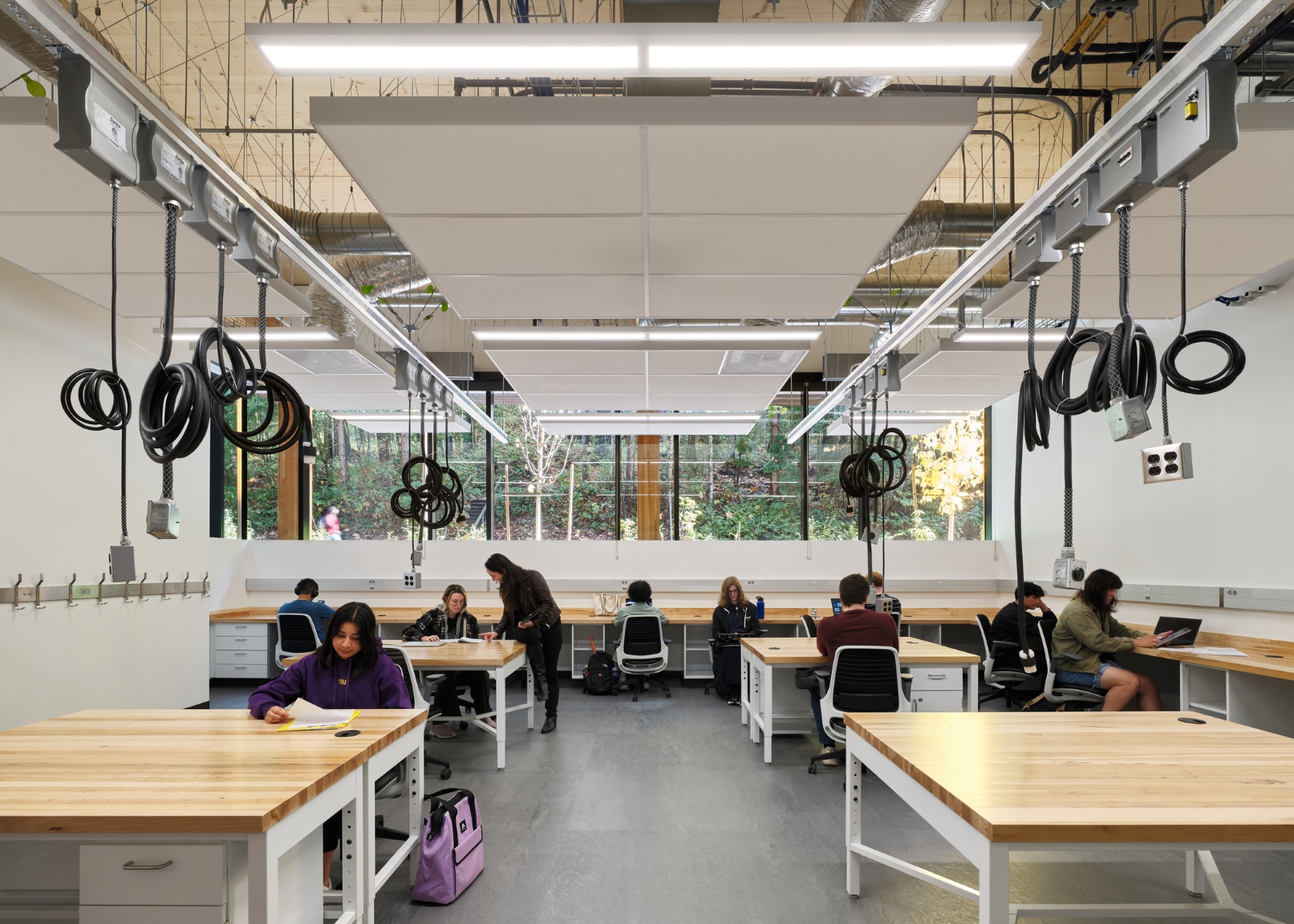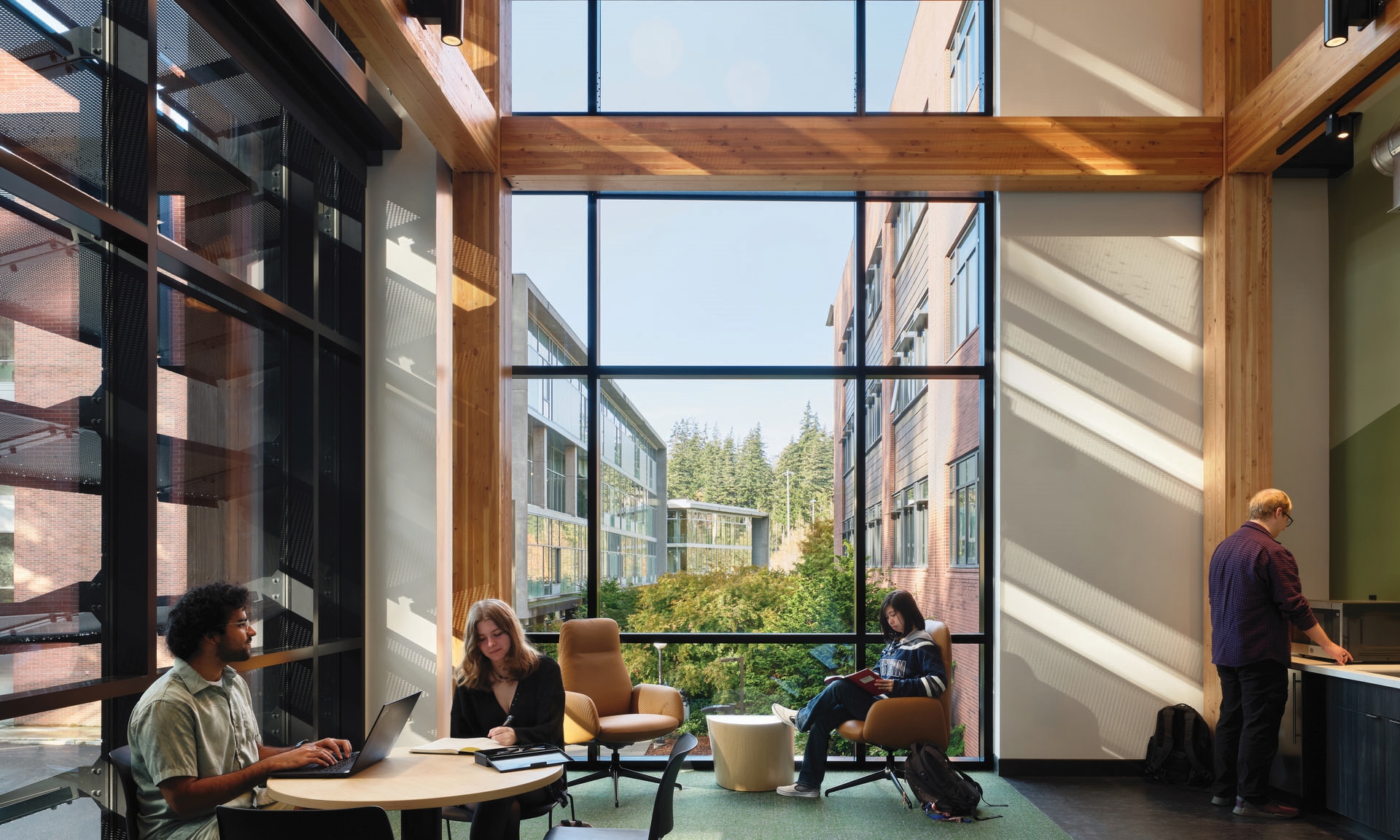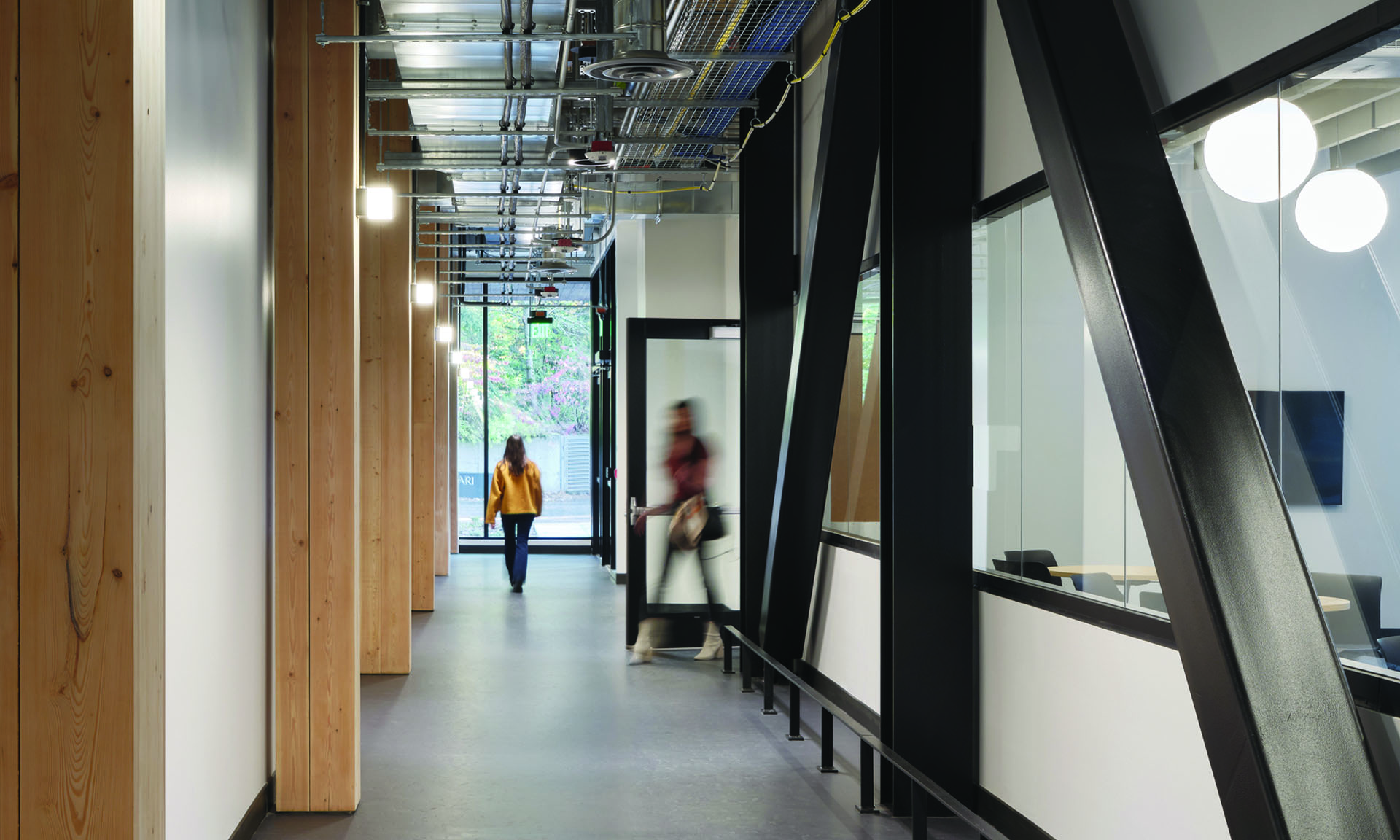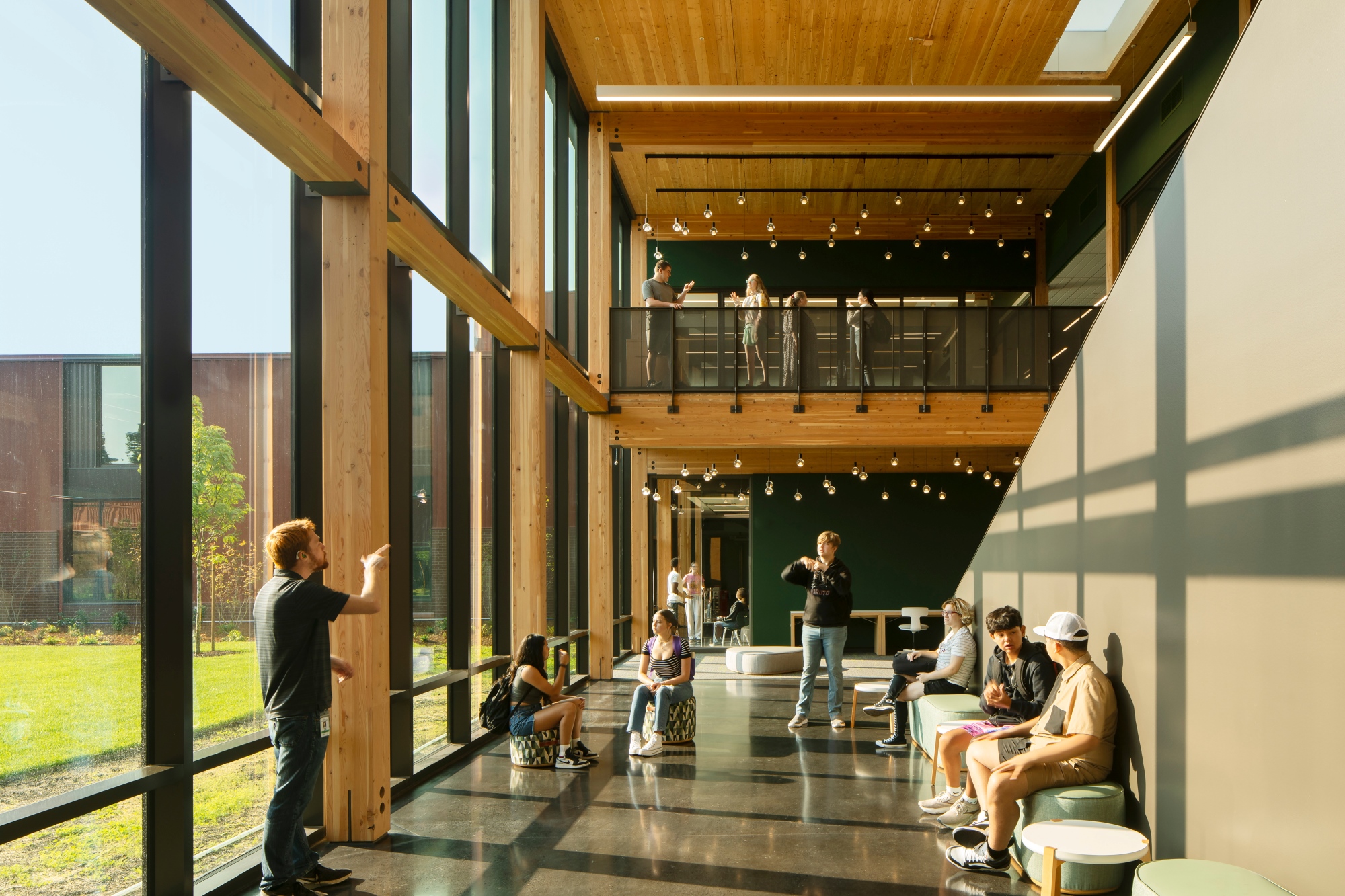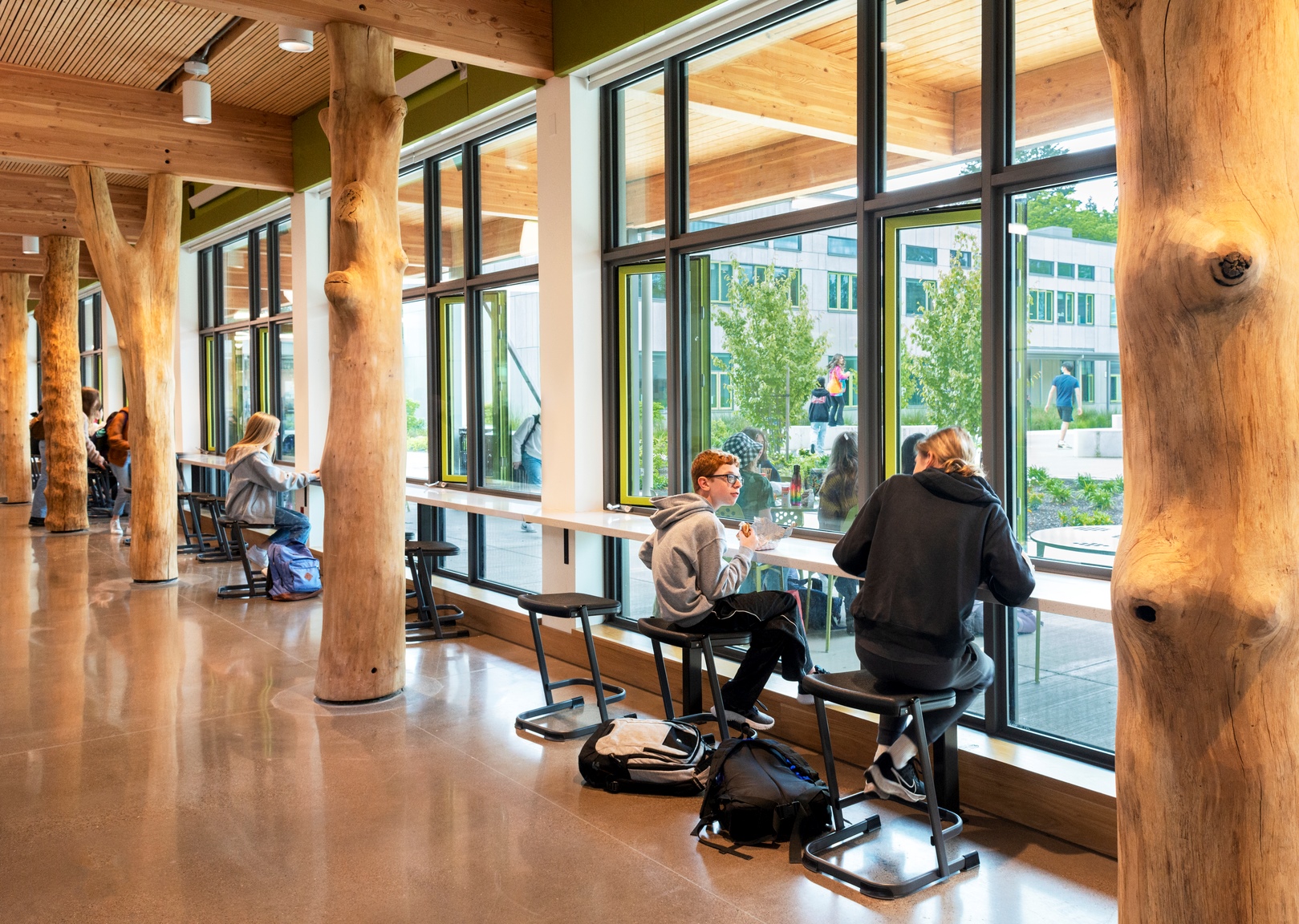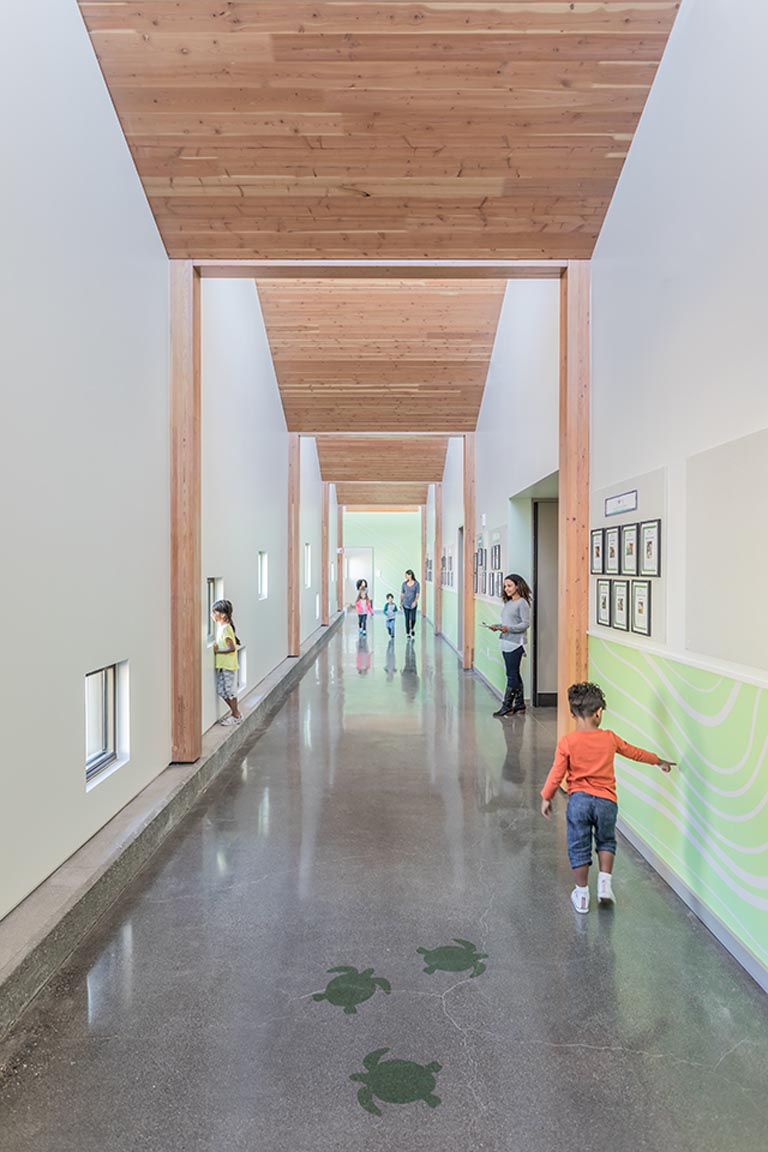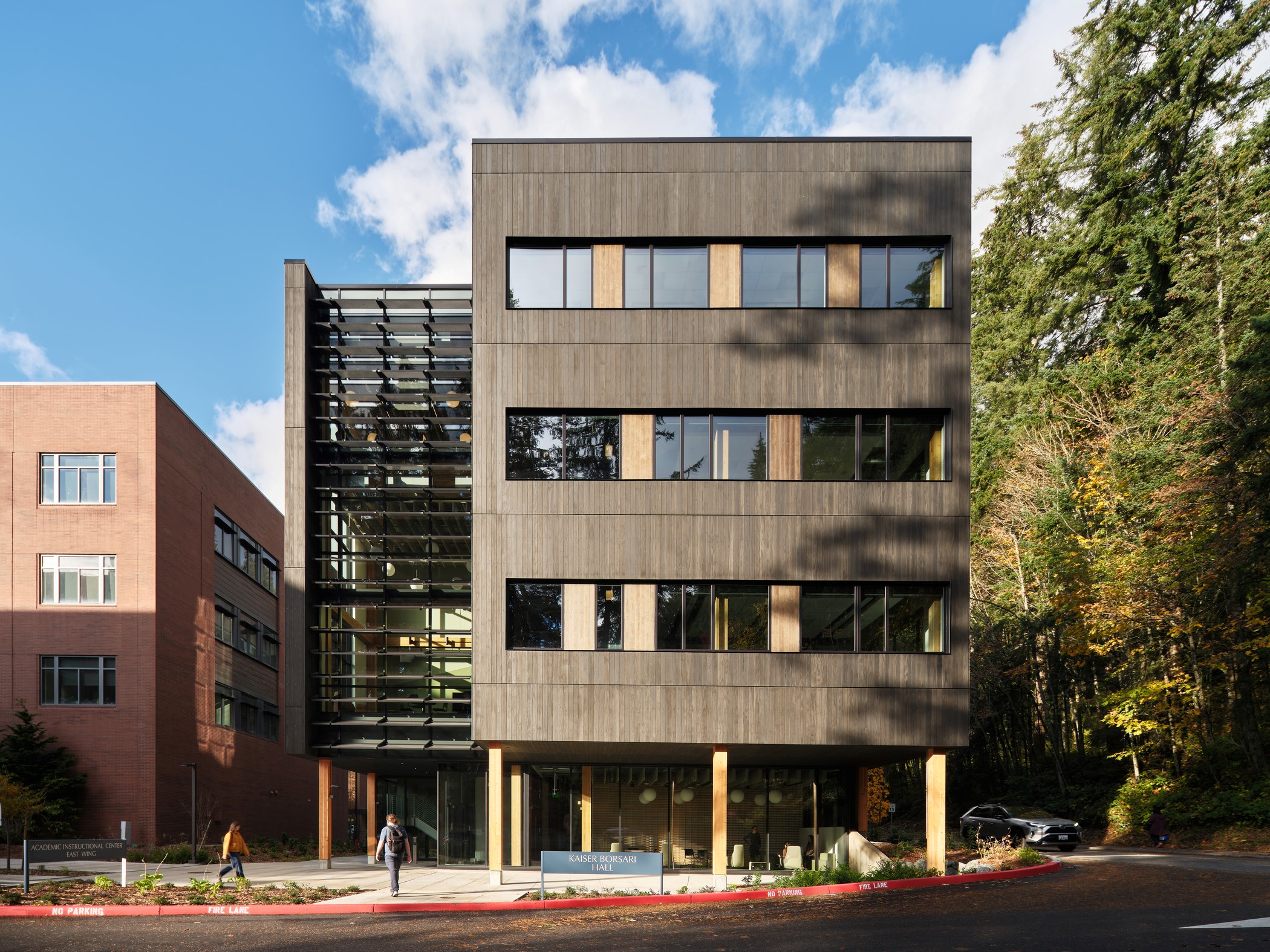
Kaiser Borsari Hall
Bellingham, WA
- Award Year
- 2025
- Award Category
- Wood in Architecture
- Architect
- Perkins&Will
- Structural Engineer
- Coughlin Porter Lundeen
- General Contractor
- Mortenson
- Owner
- Western Washington University
- Photos
- Kevin Scott
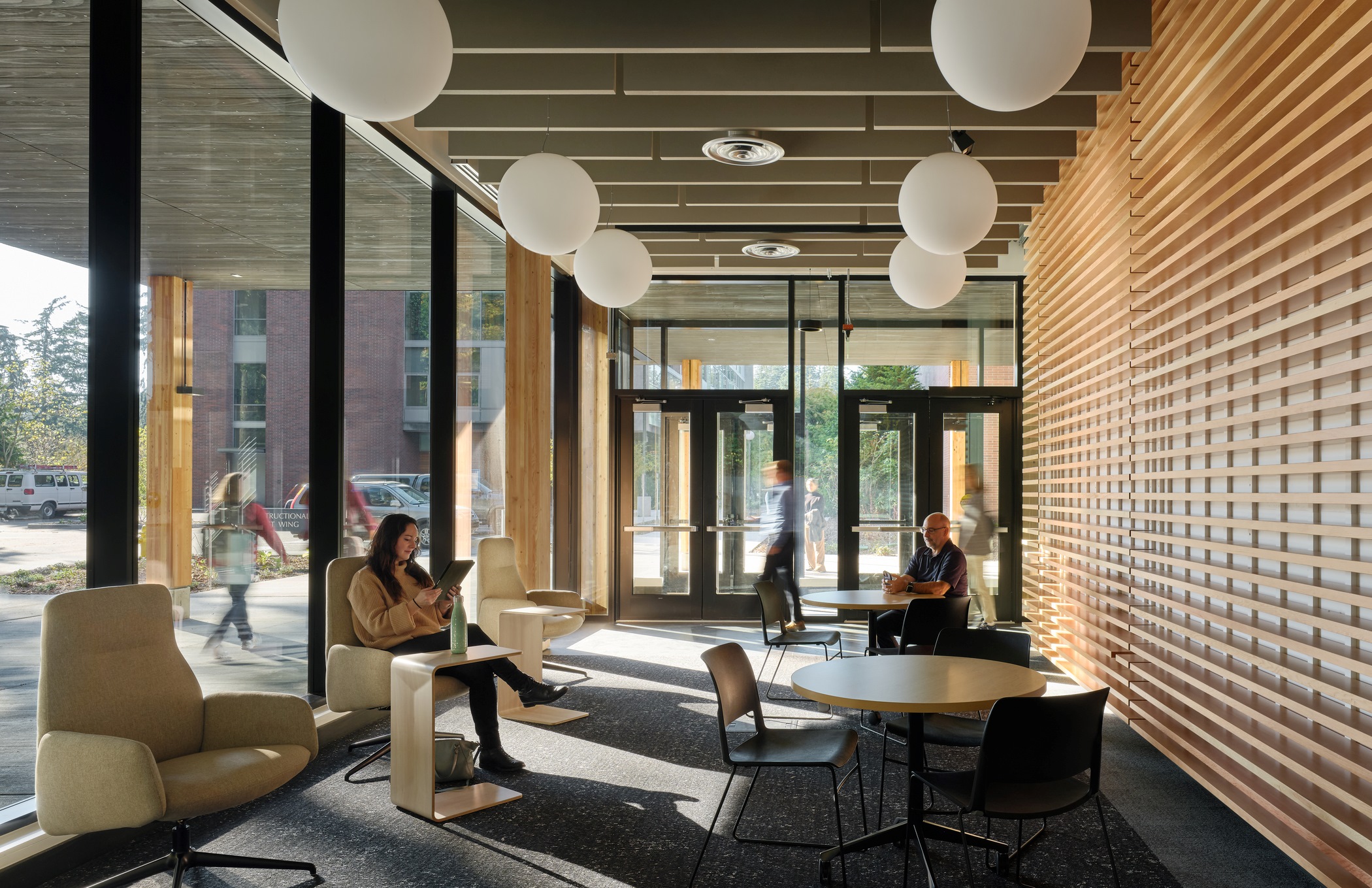
University demonstrates its deep commitment to sustainability with mass timber STEM building
Western Washington University (WWU) has a long-standing commitment to sustainability—they founded their College of the Environment in 1969 and offer several sustainability and energy degree programs. So, when they needed space for their growing electrical and computer engineering, energy science, and computer science programs, it was a chance to demonstrate their environmental leadership.
Kaiser Borsari Hall serves as a ‘living laboratory,’ allowing students to gain personal experience with the innovations epitomized within. An exposed mass timber structure, efficient mechanical systems, rooftop solar array, and advanced on-site battery storage technology all offer hands-on learning opportunities. The design team chose Type III-B construction for the four-story, 53,345-square-foot project because it allowed them to leave most of the mass timber elements—glulam columns and beams plus CLT floor and ceiling panels—exposed to view.
Instead of large lecture halls, the building features smaller classrooms, learning labs, and collaborative spaces designed to promote communication and innovative thinking. The Hall’s warm interior contrasts with the dark wood exterior cladding, treated using the ancient Japanese technique of shou sugi ban, which involves burning wooden boards to make them more durable and resistant to fire and insects.
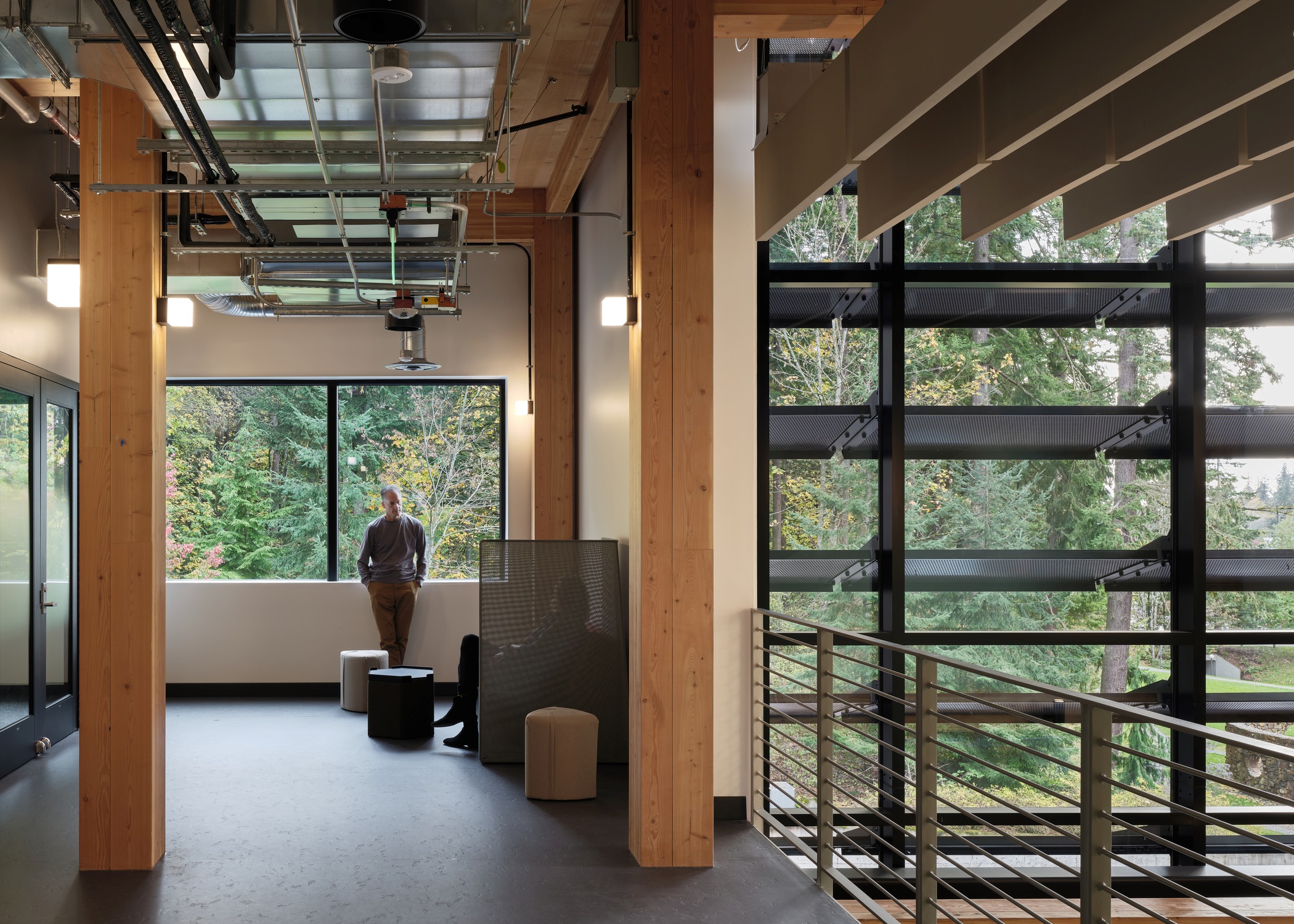
Certified through the International Living Future Institute, Kaiser Borsari Hall is one of the most sustainable higher education facilities in the U.S., achieving Zero Energy and Zero Carbon certification, as well as Energy Petal certification through the Living Building Challenge®. The project is fully electrified and uses 85 percent less energy than the AIA 2030 baseline for similar buildings.
The team’s commitment to the environment permeated every level of the project. Even the general contractor followed the Contractor’s Commitment to Sustainable Building Practices, a set of guidelines developed to help construction firms contribute through their own green building practices.
While mass timber is not commonly used to build laboratory space, its use for Kaiser Borsari Hall reflected the design team’s ‘why not wood?’ mentality. They modified the typical lab planning module to optimize mass timber material usage with a 16-foot grid, which allowed CLT panels to span between beams without sub-purlins. Because the facility’s dry computational labs have less stringent vibration requirements than other lab applications, designers strategically located sensitive equipment in areas that would experience minimal vibration, either at grade or in areas with shorter spans.
Since Kaiser Borsari Hall is both a lab and an educational building, architects used the warmth of wood to promote learning and inspire creativity. All lab spaces have direct access to daylight, and cloud ceilings help manage acoustics in the classrooms while leaving the CLT visible. The exposed wood, inside and out, adds natural beauty and creates an inspiring environment on what was formerly a parking lot.
“Kaiser Borsari Hall blends an innovative mass timber structure with groundbreaking sustainability features, making it a place where industry experts, faculty, and students can co-create technology and engineering solutions for today and tomorrow.”
Ryan Bussard, AIA, LEED AP
Principal, Design Director, Perkins&Will
-
Washington School for the Deaf Divine Academic and Hunter Gymnasium -
Lakeridge Middle School -
Genentech Child Care Center
Perkins+Will / Photo Emily Hagopian
Similar Projects
Each year, our national award program celebrates innovation in wood building design. Take inspiration from the stunning versatility of buildings from all over the U.S.
